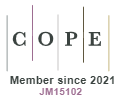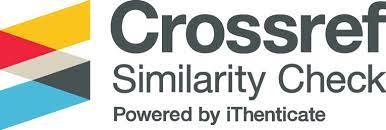The Condition of Companies and their Growth Based on the Example of Companies Included in WIG and DAX Indices
DOI:
https://doi.org/10.18778/2391-6478.2.30.02Keywords:
company growth, economic condition, Altman’s Z-score ModelAbstract
The purpose of the article/hypothesis: The paper discusses the problem of condition of companies together with their growth measured by earnings per share, sales, assets and equity. The condition of a company in a capital market is considered good when the goal of the business is achieved, namely the increase of value that occurs with the increase of earnings per share. We assume that the condition of companies measured by Altman’s Z-score Model scores is related to their growth, and ratios applied in this model influence the growth of companies measured by EPS, sales, assets and equity. The research is conducted in two groups of companies, one representing WIG listed entities and the other one comprising DAX listed companies.
Methodology: The growth of earnings per share is considered as a measure of companies’ value creation. The growth of EPS should be related to the growth of sales, assets and equity according to the growth theory. To analyze the influence of Altman’s Z-score Model on the growth of EPS, sales, assets and equity, the Pearson and Spearman correlation is applied in the first place. Moreover, logit models are applied to analyze the influence of ratios composing the Altman’s Z-score Model on the growth of EPS, sales, assets and equity.
Results of the research: Discriminant models can be applied for the assessment of the economic condition of companies but the interpretation of the results should take into account the fact that risky strategies identified by Altman’s Z-score Model as dangerous are related to the higher growth of earnings per share, therefore, there should be a negative relationship between Altman’s Z-score Model scores and EPS growth and it was confirmed in this study.
Downloads
References
Ahmed, P., Nanda, S. (2001). Style investing: Incorporating growth characteristics in value stocks. The Journal of Portfolio Management, 27(3), pp. 47–59.
Google Scholar
DOI: https://doi.org/10.3905/jpm.2001.319801
Aktas, N., de Bodt, E., Lobez, F., Statnik, J.C. (2012). The information content of trade credit. Journal of Banking and Finance, vol. 36, pp. 1402–1413.
Google Scholar
DOI: https://doi.org/10.1016/j.jbankfin.2011.12.001
Altman, E.I. (1968). Financial Ratios, Discriminant analysis and the prediction of corporate bankruptcy. Journal of Finance, 23, 4, September, pp. 589–609.
Google Scholar
DOI: https://doi.org/10.1111/j.1540-6261.1968.tb00843.x
Altman, E.I. (1983). Corporate Financial Distress. A Complete Guide to Predicting, Avoiding, and Dealing with Bankruptcy. Wiley Interscience, John Wiley and Sons.
Google Scholar
Altman, E.I., Hotchkiss, E. (2006). Corporate Credit Scoring-Insolvency Risk Models. In: Corporate Financial Distress and Bankruptcy. New Jersey: Wiley.
Google Scholar
DOI: https://doi.org/10.1002/9781118267806
Altman, E.I., Iwanicz-Drozdowska, M., Laitinen, E.K., Suvas, A. (2014). Distressed firm and bankruptcy prediction in an international context: A review and empirical analysis of Altman's Z-score model. Available at SSRN 2536340.
Google Scholar
DOI: https://doi.org/10.2139/ssrn.2536340
Altman, E.I., Yen, J., Zhang, L. (2010). Corporate financial distress diagnosis model and application in credit rating for listing firms in China. Frontiers of Computer Science in China, 4(2), pp. 220–236.
Google Scholar
DOI: https://doi.org/10.1007/s11704-010-0505-5
Bankole, K.O., Ukolobi, I.O. (2020). Value Relevance of Accounting Information and Share Price in Financial Service Industry. Research Journal of Finance and Accounting, 11(8), pp. 2222–1697.
Google Scholar
Bărbuță-Mișu, N., Madaleno, M. (2020). Assessment of bankruptcy risk of large companies: European countries evolution analysis. Journal of Risk and Financial Management, 13(3).
Google Scholar
DOI: https://doi.org/10.3390/jrfm13030058
Beaver, W.H. (1966). „Financial Ratios and Predictors of Failure. Empirical Research in accounting” Selected Studies, Supplement: Journal of Accounting Research.
Google Scholar
DOI: https://doi.org/10.2307/2490171
Chava, S., Jarrow, R.A. (2004). Bankruptcy prediction with industry effects. Review of Finance, 8, pp. 537–569.
Google Scholar
DOI: https://doi.org/10.1093/rof/8.4.537
Czerwińska, A., Michna, A., Męczyńska, A. (2013). Determinanty rozwoju małych i średnich przedsiębiorstw sektora budowlanego. Zarządzanie i Finanse, 4(2), Fundacja Rozwoju Uniwersytetu Gdańskiego, pp. 79–80.
Google Scholar
Danbolt, J., Hirst, I.R., Jones, E. (2011). The growth companies puzzle: Can growth opportunities measures predict firm growth? The European Journal of Finance, 17(1), pp. 1–25.
Google Scholar
DOI: https://doi.org/10.1080/13518470903448432
Delmar, F. (2006). Measuring growth: Methodological considerations and empirical results. Entrepreneurship and the Growth of Firms, 1(1), pp. 62–84.
Google Scholar
El Khoury, R., Al Beaïno, R. (2014). Classifying manufacturing firms in Lebanon: An application of Altman’s model. Procedia-Social and Behavioral Sciences, 109(1), pp. 11–18.
Google Scholar
DOI: https://doi.org/10.1016/j.sbspro.2013.12.413
Fitzpatrick, P.J. (1932). A comparison of ratios of successful industrial enterprises with those of failed firms. Certified Public Accountant, 12.
Google Scholar
Franc-Dąbrowska, J., Zbrowska, M. (2008). Prognozowanie finansowe dla spółki X – spółka logistyczna. Zeszyty Naukowe SGGW w Warszawie. Ekonomika i Organizacja Gospodarki Żywnościowej, Warszawa: Wydawnictwo SGGW.
Google Scholar
Franzen, L.A., Rodgers, K.J., Simin, T.T. (2007). Measuring distress risk: The effect of RandD intensity. The Journal of Finance, 62, 6, pp. 2931–2967.
Google Scholar
DOI: https://doi.org/10.1111/j.1540-6261.2007.01297.x
Grice, J.S., Ingram, R.W. (2001). Tests of the generalizability of Altman’s bankruptcy prediction model. Journal of Business Research, 54, pp. 53–61.
Google Scholar
DOI: https://doi.org/10.1016/S0148-2963(00)00126-0
Griffin, J.M., Lemmon, M.L. (2002). Book-to-market equity, distress risk, and stock returns. The Journal of Finance, 57(5), pp. 2317–2336.
Google Scholar
DOI: https://doi.org/10.1111/1540-6261.00497
Hadasik, D. (1998). Upadłość przedsiębiorstw w Polsce i metody jej prognozowania. Wydawnictwo Akademii Ekonomicznej w Poznaniu.
Google Scholar
Holder-Webb, L.M., Wilkins, M.S. (2000). The incremental information content of SAS No. 59. Goingconcern opinions. Journal of Accounting Research, 38(1), pp. 209–219.
Google Scholar
DOI: https://doi.org/10.2307/2672929
Kanapickiene, R., Spicas, R. (2019). Credit risk assessment model for small and micro-enterprises: The case of Lithuania. Risks, 7(2).
Google Scholar
DOI: https://doi.org/10.3390/risks7020067
Kasiewicz, S. (1996). Systemy wczesnego ostrzegania w bankowym funduszu gwarancyjnym (BGF), Restrukturyzacja w procesie przekształceń i rozwoju przedsiębiorstw. Kraków: Wydawnictwa Akademii Ekonomicznej w Krakowie.
Google Scholar
Kumar, P.R., Ravi, V. (2007). Bankruptcy prediction in banks and firms via statistical and intelligent techniques – A review. European Journal of Operational Research, 85.
Google Scholar
Kwak, W., Shi, Y., Cheh, J.J., Lee, H. (2005). Multiple criteria linear programming data mining approach: An application for bankruptcy prediction. Data Mining and Knowledge Management. Lecture Notes in Computer Science, 3327, pp. 164–173.
Google Scholar
DOI: https://doi.org/10.1007/978-3-540-30537-8_18
Lyandres, E., Zhdanov, A. (2013). Investment opportunities and bankruptcy prediction. Journal of Financial Markets, 16, pp. 439–476.
Google Scholar
DOI: https://doi.org/10.1016/j.finmar.2012.10.003
Merkevicius, E., Garšva, G., Girdzijauskas, S. (2006). A hybrid SOM-Altman model for bankruptcy prediction. International Conference on Computational Science. Lecture Notes in Computer Science, 3994, pp. 364–371.
Google Scholar
DOI: https://doi.org/10.1007/11758549_53
Ohlson, J.A., Juettner-Nauroth, B.E. (2005). Expected EPS and EPS growth as determinantsof value. Review of accounting studies, 10(2), pp. 349–365.
Google Scholar
DOI: https://doi.org/10.1007/s11142-005-1535-3
Ohlson, J.A. (2017). Valuation and growth. Available at SSRN 2983031.
Google Scholar
DOI: https://doi.org/10.2139/ssrn.2983031
Ooghe, H., Balcaen, S. (2007). Are failure prediction models widely usable? An empirical study using a Belgian dataset. Multinational Finance Journal, 11(1/2), pp. 33–76.
Google Scholar
DOI: https://doi.org/10.17578/11-1/2-2
Piotroski, J.D. (2000). Value investing: The use of historical financial statement information to separate winners from losers. Journal of Accounting Research, 38, Supplement: Studies on accounting information and the economics of the firm, pp. 1–41.
Google Scholar
DOI: https://doi.org/10.2307/2672906
Reisz, A.S., Perlich, C. (2007). A market-based framework for bankruptcy prediction. Journal of Financial Stability, 3, pp. 85–131.
Google Scholar
DOI: https://doi.org/10.1016/j.jfs.2007.02.001
Siekelova, A., Kovalova, E., Ciurlău, C.F. (2019). Prediction financial stability of Romanian production companies through Altman Z-score. Ekonomicko-manazerske spektrum, 13(2), pp. 89–97.
Google Scholar
DOI: https://doi.org/10.26552/ems.2019.2.89-97
Vochozka, M., Vrbka, J., Suler, P. (2020). Bankruptcy or success? The effective prediction of a company’s financial development using LSTM. Sustainability, 12(18).
Google Scholar
DOI: https://doi.org/10.3390/su12187529
Waśniewski, T., Skoczylas, W. (1993). Analiza symptomów zagrożenia przedsiębiorstwa. Rachunkowość, 12.
Google Scholar
Weinzimmer, L.G., Nystrom, P.C., Freeman, S.J. (1998). Measuring organizational growth: Issues, consequences and guidelines. Journal of management, 24(2), pp. 235–262.
Google Scholar
DOI: https://doi.org/10.1177/014920639802400205
Witkowska, D., Kuźnik, P. (2019). Does fundamental strength of the company influence its investment performance? Dynamic Econometric Models, 19, pp. 85–96.
Google Scholar
Xu, M., Zhang, C. (2009). Bankruptcy prediction: The case of Japanese listed companies. Review of Accounting Studies, 14, pp. 534–558.
Google Scholar
DOI: https://doi.org/10.1007/s11142-008-9080-5
Zaleska, M. (2002). Identyfikacja ryzyka upadłości przedsiębiorstwa i banku, Warszawa: Difin.
Google Scholar
Downloads
Published
How to Cite
Issue
Section
License

This work is licensed under a Creative Commons Attribution-NonCommercial-NoDerivatives 4.0 International License.














